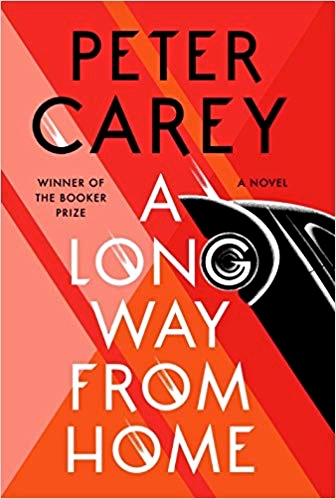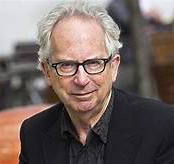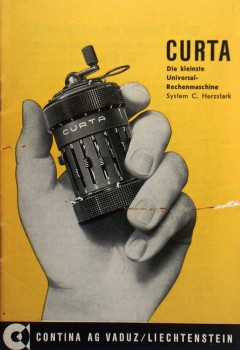Note: Peter Carey is a two-time WINNER of the Booker Prize, three-time WINNER of Australia’s Miles Franklin Award for Best Novel of the Year, and two-time WINNER of the Commonwealth Writers Prize.
“The police…hated us. They knew what the [racing] rule book would not admit, that the drivers were all maniacs, gathered to race, to burn each other off, to ‘do the ton,’ to get ahead, to make up time, to sometimes create breathing space for adjustments and repairs, but always, no matter what they said in interviews, to make the other fellow ‘eat my dust.’ ” – Willie Bachhuber, “navigator” for Titch Bobs in Australia’s Redex Trial, 1954.
 As soon as I saw the announcement that Australian author Peter Carey had published a new novel, his fourteenth in thirty-six years, I knew I would read it, just as I have read and enjoyed six other Carey novels. I have just finished reading it, and I did, eventually, enjoy and even admire much of it, but I read the first twenty-five pages three times before I was able to get a sense of who the initial speakers are, how they are connected, what the setting is, and where this book will be going. Even now I see the plot as consisting of several loosely connected parts, instead of reflecting several different aspects of the same themes and a strong sense of direction and interconnection. When I finally read some of the professional reviews today, I saw a similar dichotomy among professional reviewers. Alex Preston in the Guardian, states that this is Carey’s “best novel in years, maybe decades.” Ron Charles in the Washington Post, however, refers to the “more than a hundred pages of fairly aimless preparations” and suggests that while some “prescient readers” might pick up hints of the drama to come, that others “will probably jump out of this slow-moving plot before it reaches the main event.” He especially regrets this because “Carey eventually arrives at a profound and poignant story.”
As soon as I saw the announcement that Australian author Peter Carey had published a new novel, his fourteenth in thirty-six years, I knew I would read it, just as I have read and enjoyed six other Carey novels. I have just finished reading it, and I did, eventually, enjoy and even admire much of it, but I read the first twenty-five pages three times before I was able to get a sense of who the initial speakers are, how they are connected, what the setting is, and where this book will be going. Even now I see the plot as consisting of several loosely connected parts, instead of reflecting several different aspects of the same themes and a strong sense of direction and interconnection. When I finally read some of the professional reviews today, I saw a similar dichotomy among professional reviewers. Alex Preston in the Guardian, states that this is Carey’s “best novel in years, maybe decades.” Ron Charles in the Washington Post, however, refers to the “more than a hundred pages of fairly aimless preparations” and suggests that while some “prescient readers” might pick up hints of the drama to come, that others “will probably jump out of this slow-moving plot before it reaches the main event.” He especially regrets this because “Carey eventually arrives at a profound and poignant story.”
 The novel opens with Irene Bobs talking about her family, her husband, her two small children, his family, and her sister. She has just found a decrepit house with spacious property for rent in Bacchus Marsh, outside Melbourne, where they can live while her husband Titch develops a used car business at the back of the property. Her new next-door neighbor is a fair-haired bachelor who likes kids, but she decides not to be too kind to him because “Everything complicated in life begins with kindness.” The bachelor, Willie Bachhuber, of German heritage, is a “chalk-and-talker,” a teacher who grew up in a parsonage and who is now being sought by bailiffs for suspending a rowdy student from a school window. Willie is a student of maps and geography and makes some money by participating regularly in a popular radio quiz show. Eventually, he reveals his past, including his marriage to Adelina, which ended dramatically after the birth of “his” son, a boy who is clearly black, while he is blonde.
The novel opens with Irene Bobs talking about her family, her husband, her two small children, his family, and her sister. She has just found a decrepit house with spacious property for rent in Bacchus Marsh, outside Melbourne, where they can live while her husband Titch develops a used car business at the back of the property. Her new next-door neighbor is a fair-haired bachelor who likes kids, but she decides not to be too kind to him because “Everything complicated in life begins with kindness.” The bachelor, Willie Bachhuber, of German heritage, is a “chalk-and-talker,” a teacher who grew up in a parsonage and who is now being sought by bailiffs for suspending a rowdy student from a school window. Willie is a student of maps and geography and makes some money by participating regularly in a popular radio quiz show. Eventually, he reveals his past, including his marriage to Adelina, which ended dramatically after the birth of “his” son, a boy who is clearly black, while he is blonde.

The Curta Calculator, purchased by Bachhuber, will help him figure the statistics regarding their trip and its timing.
The first plot line, lasting for almost half the novel, begins when Titch decides to gain publicity for his incipient car dealership by participating in the Redex Trial in 1954, not a race, but a competition involving almost three hundred participants who plan to circumnavigate the whole Australian continent – all sixty-five-hundred miles around it. The winner is the team with the highest number of points gained and the fewest penalties. There are no big prizes, except for the immeasurable positive publicity for the winner. Titch and Irene will be the two drivers for their team, and their new neighbor, Willie Bachhuber, will, with his map-making expertise, become the navigator as they prepare their Holden sedan for the long trip and the hazards they will face, not least of which are the deliberate hazards for which their competition is directly responsible. Titch’s father Dan Bobs, the biggest trickster of all, uses gelignite to scare his competition, including his own family.
At about the halfway point, Carey introduces what becomes the most absorbing and important aspect of this novel. For the first time in his writing career, Carey confronts the subject of the treatment of Australia’s aboriginal people, the theft of their lands, and the attempts to destroy all remnants of their culture. Introduced when Irene finds the tiny skull of a baby boy with a bullet hole in what appears to have been an open graveyard, this discovery is clearly on the site of a massacre of some sort. The baby’s bones become a symbol throughout the remainder of the book, and when Irene tries to leave the delicate skull with the police, no one will take it – they have “no room to store it.” Within a few chapters, “Doctor Battery,” an aborigine, volunteers to help the team by fixing their problem battery, and it becomes increasingly clear that Willie Bachhuber’s background as an adoptee does not match the German background suggested by his pastor father. Other non-white characters become part of the action, and Willie, the unemployed and “wanted man,” is eventually persuaded to run a school in a cave in a secluded community of aborigines. He is reluctant to stay there long because the place feels to him like a kind of prison, the residents being “exiles in the land….denied the meaning of their lives.”
The wild Redex Trial and its outcome, the marital difficulties of Titch and Irene, the mysterious background of Willie, the incipient love stories throughout, the criminal social element which enters the plot with Titch’s father and his friends, the misunderstandings, and the whole setting provide some simple excitement and interest, though some readers will be hoping for much more. The setting and Carey’s own feelings about the country’s history regarding the indigenous population, displaced and consigned to the equivalent of exile in their own country, are clearly very real, however, and very important to the author. In addition, Carey himself grew up in the same town, Bacchus Marsh, where Titch and Irene are living and building a car dealership. His own father was a car dealer, and Carey’s familiarity with that community makes that setting feel vibrant. Irene’s discovery of the baby’s skull with the bullet hole is a moving scene and brings the novel’s focus into a new, more complex arena at about the halfway point, giving real life to the conclusion. Ultimately, some readers may feel that the main characters are not as well developed as some of Carey’s characters in other novels, and that this novel lacks the coherence and depth of those novels. Still, this new work does come alive in several areas, and Carey is so talented, overall, that many readers will forgive the possible missteps along the way.
ALSO by Carey: THEFT, THE CHEMISTRY OF TEARS
Photos. The author’s photo appears on https://quotesgram.com
The Curta Calculator, purchased by Bachhuber, will help him figure the statistics regarding their trip and its timing. https://www.jaapsch.net/
Titch and Irene, and occasionally Willie, drive this model of the GMC Holden sedan for the Redex Trials. https://www.autoevolution.com/
Authentic photo from the Redex Trials of 1953. http://www.clubvw.org.au/
The old brick Kororoit Bridge entering Melbourne marks the beginning of the end for the Redex Trials. https://www.flickr.com/ Photo by Dave.



